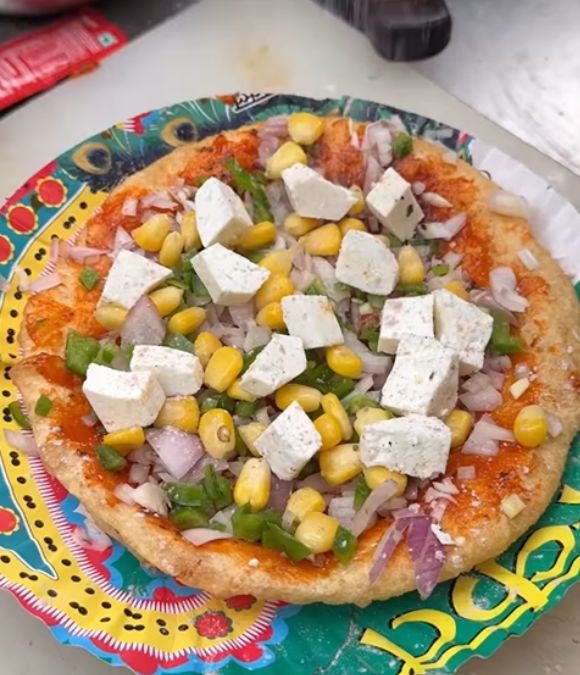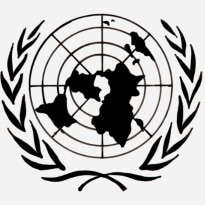Eradicating hunger in Africa by 2025 is achievable -- if Africa's leaders champion it and promote improved crop production and healthy eating, the head of the U.N. food and agriculture agency said Friday.Jose Graziano da Silva went even further in an interview with The Associated Press, saying the Food and Agriculture Organization believes that hunger can be eradicated around the globe "in a generation -- in our lifetime" if there is a political commitment by world leaders to ensure that all their citizens get access to nutritious food."We are not talking about sending a man to the moon or something that complicated," he said. "We have the technology. We have the expertise. We have the things that we need to do it."
Graziano said the World Food Programme looked at how the 62 countries that have achieved the first U.N. Millennium Development Goal -- reducing extreme poverty by half -- did it before the target date of the end of 2015, and it found three key factors.First, he said, was "political will" and leadership, because improving food security involves improvements not only in agriculture but in nutrition, health, water supplies and storage facilities, to name a few."If the president doesn't take the lead, or the prime minister ... it doesn't work," he said.Second, Graziano said, is improving agricultural performance and access to food."According to FAO, we have more than enough food produced nowadays to avoid hunger," he said. "People are hungry today because they don't have access to food ... because they cannot pay for the food or they cannot produce it any more as we did in the past."One problem is that one-third to one-half of the food produced today is lost or wasted for a variety of reasons including bad storage, poor transportation and cultural issues, including the move from traditional cuisine to fast food, he said. A lot of food that could be consumed is thrown out, often because of huge portions.Third, Graziano said, is improving the nutritional value of the food people eat."We are seeing more and more malnutrition rise in developed countries ... because of the quality of what (people) are eating," he said.When children are listed by income, for example, "you see in families with the lowest income a proportion of obese and malnourished (youngsters) similar to the families that have high level income," he said.Graziano said the FAO is promoting the best practices collected from around the world to eradicate hunger, especially in Africa, "where we have the worst situation at the moment." He expressed hope that an African Union summit in January will set a target to eradicate hunger in Africa by 2025."All countries in Africa can do it ... with the proper assistance FAO is giving them," he said.For example, the FAO in early 2012 declared a famine in Somalia, but Graziano said "we have been able to pull Somalia out of famine in six months" with improvements in agriculture and livestock raising and a cash-for-work program aimed primarily at women because they provide food for the family. This program was based on the FAO's experience in Brazil, Vietnam and other countries, he said.Graziano was in New York to launch the "International Year of Family Farming" in 2014.There are almost 500,000 family farms, mostly in Africa where 95 percent of farmers are small or subsistence farmers, many of whom don't produce enough to eat, he said.Graziano said the FAO is promoting family farms because they are "the most efficient" when it comes to using land and water resources and because the agency wants to promote local production and local use of food, which avoids increasingly high transportation costs.Graziano is also still promoting this year's International Year of Quinoa -- "the unique cereal that has all the proteins and amino acids that the human being needs" and requires 100 percent less water than any other cereal. That makes it perfect for dry areas, and it can be cultivated at any altitude.The FAO achieved its goal of introducing quinoa in the Sahel and the Horn of Africa, where countries are testing different varieties, as well as in Yemen, he said."It takes one or two years of testing and choosing the best one," Graziano said, "but after that ... the wind helps a lot because it spreads the seeds all around -- you don't need to pay Monsanto for the seeds! So it will be really amazing to see the Sahel and many drought areas of the world cultivated with quinoa in the future, and we are working on that."
Graziano said the World Food Programme looked at how the 62 countries that have achieved the first U.N. Millennium Development Goal -- reducing extreme poverty by half -- did it before the target date of the end of 2015, and it found three key factors.First, he said, was "political will" and leadership, because improving food security involves improvements not only in agriculture but in nutrition, health, water supplies and storage facilities, to name a few."If the president doesn't take the lead, or the prime minister ... it doesn't work," he said.Second, Graziano said, is improving agricultural performance and access to food."According to FAO, we have more than enough food produced nowadays to avoid hunger," he said. "People are hungry today because they don't have access to food ... because they cannot pay for the food or they cannot produce it any more as we did in the past."One problem is that one-third to one-half of the food produced today is lost or wasted for a variety of reasons including bad storage, poor transportation and cultural issues, including the move from traditional cuisine to fast food, he said. A lot of food that could be consumed is thrown out, often because of huge portions.Third, Graziano said, is improving the nutritional value of the food people eat."We are seeing more and more malnutrition rise in developed countries ... because of the quality of what (people) are eating," he said.When children are listed by income, for example, "you see in families with the lowest income a proportion of obese and malnourished (youngsters) similar to the families that have high level income," he said.Graziano said the FAO is promoting the best practices collected from around the world to eradicate hunger, especially in Africa, "where we have the worst situation at the moment." He expressed hope that an African Union summit in January will set a target to eradicate hunger in Africa by 2025."All countries in Africa can do it ... with the proper assistance FAO is giving them," he said.For example, the FAO in early 2012 declared a famine in Somalia, but Graziano said "we have been able to pull Somalia out of famine in six months" with improvements in agriculture and livestock raising and a cash-for-work program aimed primarily at women because they provide food for the family. This program was based on the FAO's experience in Brazil, Vietnam and other countries, he said.Graziano was in New York to launch the "International Year of Family Farming" in 2014.There are almost 500,000 family farms, mostly in Africa where 95 percent of farmers are small or subsistence farmers, many of whom don't produce enough to eat, he said.Graziano said the FAO is promoting family farms because they are "the most efficient" when it comes to using land and water resources and because the agency wants to promote local production and local use of food, which avoids increasingly high transportation costs.Graziano is also still promoting this year's International Year of Quinoa -- "the unique cereal that has all the proteins and amino acids that the human being needs" and requires 100 percent less water than any other cereal. That makes it perfect for dry areas, and it can be cultivated at any altitude.The FAO achieved its goal of introducing quinoa in the Sahel and the Horn of Africa, where countries are testing different varieties, as well as in Yemen, he said."It takes one or two years of testing and choosing the best one," Graziano said, "but after that ... the wind helps a lot because it spreads the seeds all around -- you don't need to pay Monsanto for the seeds! So it will be really amazing to see the Sahel and many drought areas of the world cultivated with quinoa in the future, and we are working on that."
Advertisement








